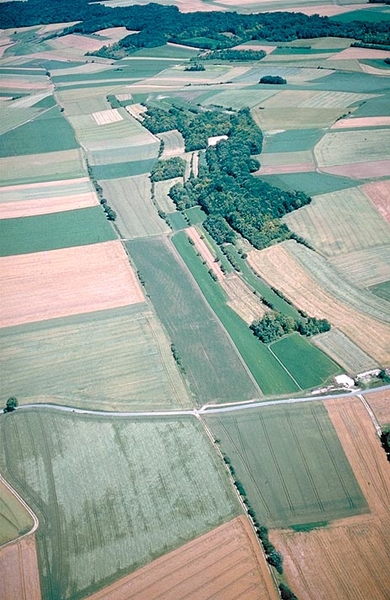- Home
- Clues on the ground
- The landscape
(1) The Roman road is overlaid with a modern highway at La Chaussée-Bois-d'Écu (Oise).
(2) Changes to an ancient Roman road at Pasly (Aisne).
(3) Between Cormeilles and Hardivillers (Oise), the line of a Roman road is revealed by the edges of fields, dirt roads, and the alignments of bushes.
The landscape of France has been shaped by human activity (topographical clues). For thousands of years, farming, wars, and continuous development have left their mark, even if recent land consolidation projects have often irreparably damaged this heritage. "The landscape is the most beautiful of our historic monuments" (R. Agache, 1974).
To quote Gaston Roupnel on the subject:
"Nature that humans have shaped to serve them, that they have composed with their works and filled with their tasks… This rustic creation is human beings' greatest work" (Roupnel, Histoire de la campagne française, 1932).
Our countryside is thus a fundamental clue to the presence of the past. Even a non-specialist can make out a 2000-year-old Roman road. Some are still straight roads (1), others take the form of dirt paths and edges of fields (2), and of linear hedges and bushes (2).



